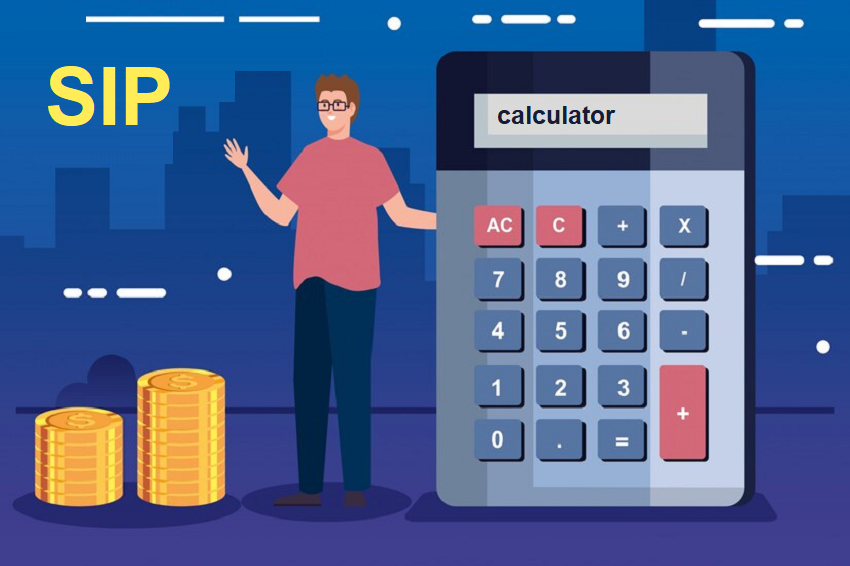Planning investments in new fund offers (NFOs) have their own challenges. Investment horizon, expected returns and investment risk are equally challenging factors that need to be considered. To aid and organize this process, a systematic investment plan commonly known as a SIP calculator is used by investors.

The SIP calculator can help the investor determine how viable such investments should be on a regular basis, when to start and what kind of returns can be expected over a given period. It incorporates aspects of the fund’s past performance, market risks and other economic parameters to clearly state the potential numbers.
Whether you are an experienced investor or a novice, knowing how to use a SIP calculator will help you immensely in investing in NFOs and make you feel that your financial goals are realistic while investing.
Understanding SIPs and NFOs
What is a SIP?
A Systematic Investment Plan or SIP is an investment where equal amount of money is invested repeatedly in a mutual fund for a long period of time. SIP on the contrary invests a fixed amount at equal intervals, like monthly or even quarterly investment to build the amount to be invested. This method helps to cut-down the effect of high volatility in the market, to benefit from rupee cost averaging and also develops a regular saving culture among the targeted group.
What is an NFO?
The New Fund Offer (NFO) is one of the ways through which the Mutual Fund houses come through when they want to launch a new scheme. When an NFO is launched in the market, the investors get the option to invest in the units of the new fund at the NAV as it is offered for the first time. NFOs may be attractive for the high possible return and diversification effect but they also consist of some risks.
Why Use a SIP Calculator?
A SIP calculator is helpful resources to potential investors, especially those who would wish to invest in the stock market. It helps in:
- Forecasting of returns: Being the process of estimation of returns from given data available and projected market conditions.
- Periodic investment: Still, you need to determine how much you have to invest over time in order to achieve your financial goals.
- Risk control: Self-assessment and realization of risks that are associated with fluctuations in the market concerning investment portfolio.
- Problem solving: Decide between different strategies for investing and determine the most appropriate strategy.
Steps to Use a SIP Calculator for Investing in NFOs
Step 1: Gather Necessary Information
Before using a SIP calculator, one needs to be in possession of the following details:
- Investment Amount: Choose the amount of money which you want to use to invest a fixed amount periodically like ₹5000 every month.
- Investment tenure: Determine the duration of your investment (e.g., 5 years).
- Expected rate of return: There can be assumptions made here but generally estimating with other similar funds or general market average could be used (e.g. 12% on an annual basis).
- Frequent of invest: It is also important that you choose how often you intend to invest in this system (monthly, quarterly, etc.).
- Inflation rate: It is necessary to evaluate the average rate of inflation so that the real returns can be portrayed sufficiently; it may be 3 percent per annum.
Step 2: Input Data into the SIP Calculator
As earlier noted, most of the online SIP calculators are easy to use. Here’s how to proceed:
- Select a good SIP Calculator: For this, invest in an appropriate tool that provides the SIP Calculator on a secure and reliable financial website or in an app.
- Enter Investment Details: Enter in the known amount of money you wish to invest regularly in term of its amount fixed for investment.
- Investment Tenure: Enter the duration of your investment.
- Expected Rate of Return: Input your estimated rate of return.
- Frequency: Select the frequency of your SIP (monthly, quarterly, etc.).
- Inflation Rate: If available, input the expected inflation rate.
- Calculate: Use the calculate button to get the result of the selected input.
Step 3: Analyze the Results
In particular, the data presented in the SIP calculator will comprise the following:
- Future value of investment: The total value of your investment at the end of the tenure.
- Total investment: Total of all the money that you will put in during this period.
- Return: Gains or accumulated returns in the investment account.
- Compound Annual Growth Rate (CAGR): It is the mean rate at which your investment is compounded over the period of time or period asked for.
Step 4: Evaluate Different Scenarios
When making a good decision, it is desirable to consider several options:
- Amount investment: This allows you to experiment with the different amounts that you wish to invest in order to have different results.
- Different tenures: This section also shows what differences exist when it comes to investment period and goals during that time.
- Merits: Evaluate the effects of change in expected rate of return using best and worst rate of return of the investment project.
Step 5: Consider Additional Factors
However, there are other qualitative attributes associated with a project that needs to be taken into consideration besides the numerical outlook offered by a SIP calculator.
- The performance of the fund manager: It is crucial to assess how the fund manager has been performing in the past.
- The nature of the fund: Select the group of funds with a similar nature to see the fund’s performance history.
- Market conditions: Economic condition and condition in the market that exists currently.
- Risk tolerance: Make sure you avoid high risk products if you do not have the stomach handling them due to poor financial health.
Step 6: Make an Informed Decision
In this case, the manager must make the decision of whether to invest or not to invest in the NFO. The second guiding principle is to ensure that your decision corresponds with your financial objectives, aversion to risk and investment plan.
Tips for Effective SIP Investment in NFOs
- Go far: The earlier one is able to start the process, the longer one has to let the compounding effect take place.
- Be consistent: The practice of making regular expends also ensure that the costs fluctuate and reduces the risks.
- Rebalance periodically: You should always monitor and rebalance the investment portfolio after certain time intervals to bring alignment with the initial objectives.
- Emotional trading: People compromise when the market is inordinately volatile; the best approach is to avoid this.
- Consult with a financial advisor: I always recommend that you should consult with the professional in the matters relating to your finance.
Conclusion
It is advisable to use a SIP calculator before investing in NFOs to have a clear view of its feasibility. It gives a clear scenario of possible gains being achieved thereby assisting one do the right things. The share and analysis of various scenarios of SIPs and NFOs will help you get the necessary data for optimizing investments.
However, remember that investing is a long-term strategy and good behavior can make a great difference to your financial condition. Be educated, be informed, be constant and your money will gradually increase in value over time.


